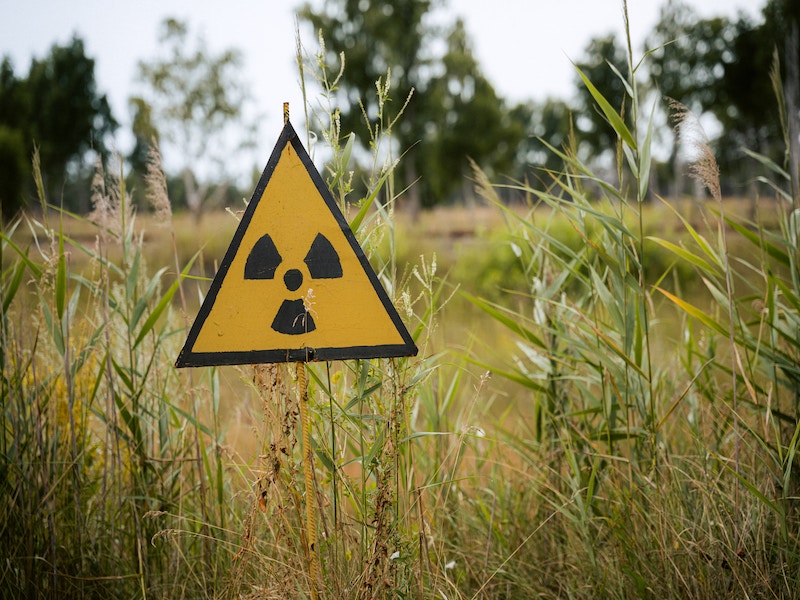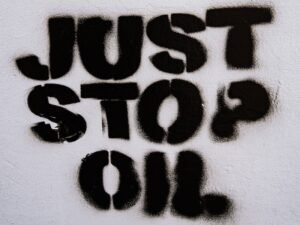We’re hurtling into a world of profound uncertainty
The deciding factor in the Soviet Union building a Doomsday Machine in Dr Strangelove was a paranoid fear America would do the same and thereby create a Doomsday gap. The Doomsday Machine was designed to create a radioactive cloud that would encircle Earth for 93 years. The Soviet Unions Ambassador to America calmly explains to the President that “the Doomsday Machine is designed to trigger itself automatically…it is designed to explode if any attempt is ever made to untrigger it.” While nuclear war has been avoided in the real world, the climate crisis is likely to create conditions that will bring us on the precipice of this doomsday event.
It’s impossible to predict how the climate crisis will impact society, but what we do know is that global warming will lead to more extreme weather events such as heatwaves, droughts, intense precipitation and floods. These events can cause humanitarian disasters, destabilise markets, damage critical infrastructure and harm food production.
In its 2021 Ecological Threat Report (ETR), the Institute for Economics and Peace highlights how 30 countries, home to 1.26 billion people, face the highest level of ecological threat. The major risk is that “ecological threats are correlated with high levels of violence. This is due to systemic dynamics, whereby the depletion of resources and violent disputes reinforce one another, forming a vicious cycle.” The lack of resilience in countries covered in the ETR will worsen food insecurity and competition over resources, increase civil unrest and mass displacement, and expose developed countries to increased influxes of refugees.
It’s estimated that by 2050 there will be one billion climate refugees, creating a humanitarian crisis on an unimaginable scale. Inevitably climate refugees will move towards habitable, developed countries. It’s hard to imagine they’ll be welcomed with open arms, particularly when food shortages will become the order of the day.
Between 2012–2017 global maize exports were 125 million tonnes, and total maize production was 986 million tonnes. With 2°C of global warming, total production in the top four maize-exporting countries is projected to decline by 53 million tons, equivalent to 43 percent of global maize export volume. 4°C of warming will see production declines in these top-exporting countries increase to 139 million tons, which is 14 per cent of global production and exceeds present-day exports.
Chatham House’s Climate Change Risk Assessment shows how unstable grain markets are set to become. By 2040 the probability of a 10 percent yield loss, or greater, within these four countries rises to 40–70 percent. The probability of a synchronous, greater than 10 percent crop failure across each country at the same time is currently near zero, but “the probability of a synchronous crop failure of this order during the decade of the 2040s is just less than 50 per cent.” The report goes on to suggest that “multiple breadbaskets may suffer simultaneous effects, with the potential to drive significant reduction in yields at global as well as regional levels.”
The 2006–2008 global food crisis illustrates the potential consequences of synchronous crop failures. Price spikes can lead to urban unrest and make governments vulnerable to collapse, particularly in developing countries. Due to this risk, many large exporting countries, including Brazil and Argentina, imposed export bans on maize during the food crisis, decreasing global supply. At the same time, maize-importing countries introduced trade incentives to lower the price of imported grain, increasing import demand. The combination of less supply and more demand led to maize prices spiking by 83 percent. It was a similar story for other staple grains like rice and wheat.
The consequences of mass crop failures will be seismic. Since the end of the second world war, massive productivity gains combined with the distributive power of the free market have created abundance. Abundance has made it mutually beneficial to join an increasingly interconnected world economy and sell products and produce to one another. This is a significant reason why peace has followed in the footsteps of globalisation. The benefits of peace far outweigh the price of war. In fact, since world war two, “higher overall levels of participation in international trade and participation in international regional alliances are associated with a reduced risk of state collapse in countries around the world…evidently, high levels of economic and diplomatic engagement with the world provide some constraint on domestic competition and conflict.”
If mass droughts create food shortages, cooperation will likely break down as grain-producing countries ban exports to maintain social stability. Not only that, but exporting countries may use food as a political weapon to leverage power and influence. With chronic shortages, “a societal consensus could emerge that the free market economic model is unsustainable, and governments could move towards constraining people’s consumption…this could lead to macro-economic discontinuities with far-reaching consequences for inflation rates, asset prices, jobs and livelihoods.”
Shortages will no longer make it beneficial to sell produce on the market. Should countries become protectionist, it would lead to a breakdown of the mechanisms needed for free trade, which would shatter the current world order.
Our lives have always been defined by a basic social expectation of the freedom to choose what you do, say and buy. Governments encourage increasing consumption because it’s so important for a thriving economy, and companies depend on it to maintain profit margins. The idea that our consumption habits would need to be constrained will feel like a draconian measure when life has always been defined by a celebration of consumption. Governments will be all too aware that such extreme measures will be deeply unpopular and are likely to trigger social unrest, but they’ll be faced with no other choice.
Globalisation can only work if every country is willing to sell on the open market, but as the impacts of the climate crisis become more aggressive and scarcity begins to impact prices, those days will come to an end. Shifts in prices to key commodities “can adversely affect economic growth and state revenues.” And as growth is key to averting economic crisis, a return to scarcity could lead to a global economic depression, resulting in mass job losses and a sharp decrease in living standards, which will only work to further erode confidence in governments’ ability to maintain stability.
Food shortages, water scarcity, climate refugees, a breakdown of cooperation in the market, economic shocks, and inflation; when you combine the impacts of environmental changes, they are set to increase “the level of stress within national and international society, thus increasing the likelihood of many different kinds of conflict and impeding the development of cooperative solutions.” In a world of scarcity, the risk of war, including nuclear war, will increase as countries seek to gain control of critical resources. Ultimately environmental changes could “cause the gradual impoverishment of societies…which could aggravate class and ethnic cleavages, undermine liberal regimes, and spawn insurgencies.”
Whatever way you look at it, the scale of environmental changes means we are hurtling into a world full of uncertainty, suffering and instability. Desperate times will call for calm heads, but when faced with a tidal wave of problems, it may well lead to desperate measures. So long as nuclear bombs exist, their use in a world of unprecedented upheaval can never be discounted. Let’s hope upheaval inspires cooperation; history shows us it’s likely to do the opposite.



